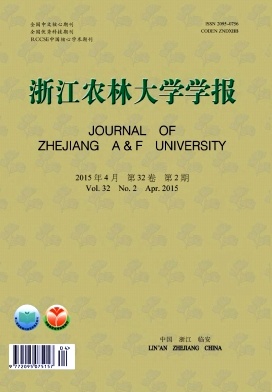Sap flow characteristics during the growing season for Cunninghamia lanceolata in red soil areas of Jiangxi Province
doi: 10.11833/j.issn.2095-0756.2015.02.013
- Received Date: 2014-04-22
- Rev Recd Date: 2014-07-02
- Publish Date: 2015-04-20
-
Key words:
- botany /
- Cunninghamia lanceolata /
- sap flow /
- seasonal changes /
- meteorological factors
Abstract: As an excellent pioneer tree species, Cunninghamia lanceolata has been widely planted for ecological reforestation in red soil areas of subtropical China. To evaluate the ability of C. lanceolata for utilization and adjustment of available environmental water during reforestation in degraded red soil areas, and ultimately provide a theoretical basis for suitable tree species selection and stand structure configuration, sap flow velocity (Js) was measured with the thermal dissipation probe method at Qianyanzhou Experimental Station of Jiangxi Province. Also, several related environmental factors, including average net radiation (ANR), air temperature (Ta), and relative air humidity (RH) were recorded continuously using an automatic weather station. A correlation analysis, an analysis of variance (ANOVA), and a regression analysis were used on the data. Results showed that (1) Diurnal variations of sap flow displayed typical single-peaked curves on sunny days. Obvious seasonal dynamics were found mainly because of different starting times, peak times, and durations of time at relatively high levels of sap flow velocity. Furthermore, based on the same time point, sap flow velocity was much lower on rainy days than that on sunny days, and diurnal changes of sap flow exhibited strong differences due to intervals between precipitation. (2) The average monthly sap flow velocity follows the order of July(0.001 012 cms-1), June(0.000 999 cms-1), August(0.000 941 cms-1), September(0.000 930 cms-1), May(0.000 731 cms-1), April(0.000 628 cms-1), October(0.000 494 cms-1). (3) About a 1 h time lag existed between Js and ANR in a clockwise direction; and a 2 h time lag was found between Js and Ta, RH, and vapor pressure deficit (VPD) in a counter-clockwise direction. Js was positively correlated with ANR (r = 0.495-0.781), Ta (r =0.752-0.878), and VPD (r =0.712-0.933), but negatively correlated with RH (r = -0.790--0.978); the ANOVAs were also significant. However, the influence of meteorological factors on Js differed. In the cases the time lag effect contained, multi-linear regression patterns between monthly Js and factors were all significant at F = 0.01 with the coefficients of determination (R2) as high as 0.95. [Ch, 3 fig. 2 tab. 32 ref.]
| Citation: | TU Jie, HU Liang, LIU Qijing, et al. Sap flow characteristics during the growing season for Cunninghamia lanceolata in red soil areas of Jiangxi Province[J]. Journal of Zhejiang A&F University, 2015, 32(2): 257-263. DOI: 10.11833/j.issn.2095-0756.2015.02.013 |









 DownLoad:
DownLoad: